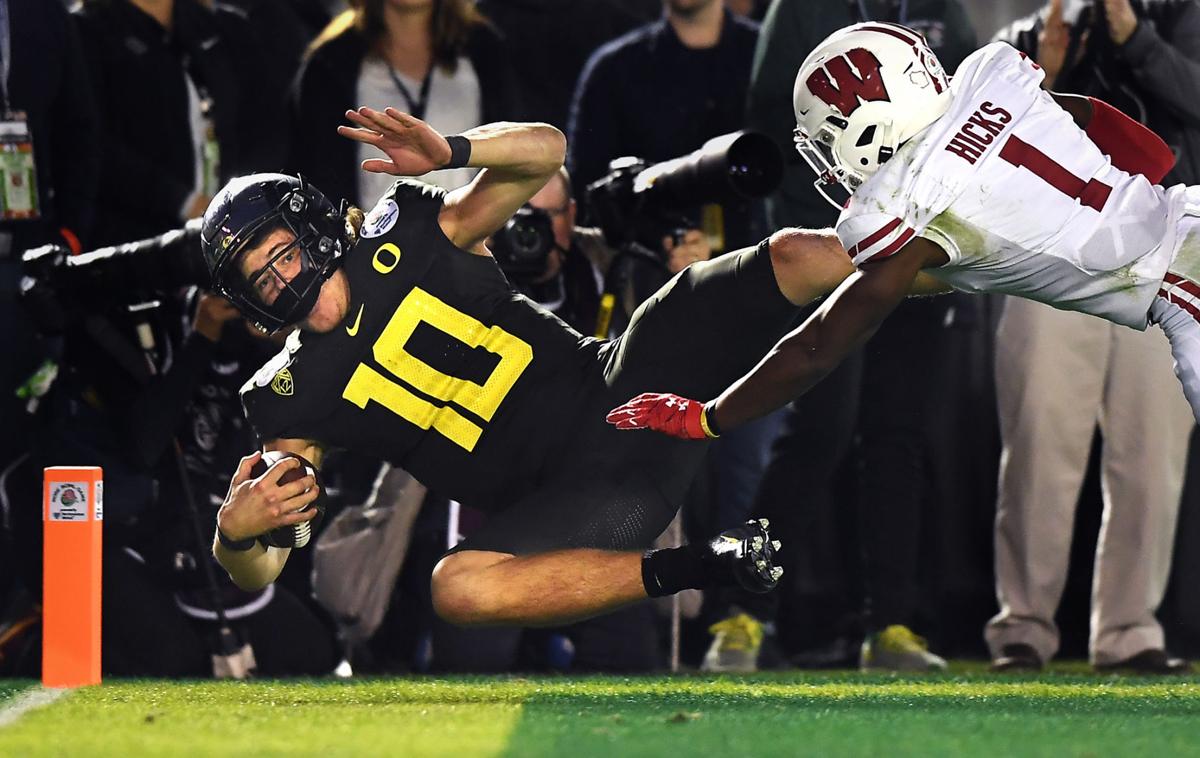The proposed format for an expanded College Football Playoff doesn’t guarantee a berth for the Pac-12 champion, but it would secure a massive cash infusion for the entire conference.
The 12-team event, which could be approved as early as June 22, would not only triple the number of teams but also the amount of revenue generated.
Pac-12 schools, which currently receive approximately $9 million annually from the playoff, could see that amount soar to $27 million per school per year, according to estimates by a data research company that has advised numerous Power Five conferences over the years.
In early June, the Hotline reached out to Navigate and asked the Chicago-based firm, which specializes in the valuation of sports rights, to generate revenue projections for the Pac-12 based on various playoff expansion scenarios.
Late last week, the CFP’s expansion subcommittee revealed its preferred format: a four-round event featuring 12 teams, with the six highest-ranked conference champions receiving automatic bids. (There are 10 conferences in the Football Bowl Subdivision.)
“Nothing is certain yet in terms of who will own certain rights to the new games and how revenue will flow to all of the different stakeholders,” explained Navigate’s Matt Balvanz, senior vice president of analytics and innovation.
“(But) it’s clear that this expansion will provide a massive financial lift to all (Power Five) football schools.”
Indeed, key details of the 12-team proposal have yet to be determined, including the start date: The CFP will remain a four-team event for the 2021 and 2022 seasons, with expansion set for 2023 at the earliest.
The proposal must be approved by the CFP’s management committee (i.e., conference commissioners) later this week and then by the board of managers (university presidents) early next week.
If the 12-team format gains full clearance, contract negotiations with ESPN and any other potential media partners could commence.
The revenue projections provided to the Hotline by Navigate are based on 1) the CFP’s current contract with ESPN, 2) rising media rights valuations for live sports and 3) assumptions about viewership for an event that would expand from two rounds to four.
Under the proposal made public last week, the 12-team playoff would begin in the middle of December, with the No. 5 through 8 seeds hosting the No. 9 through 12 seeds for on-campus games.
The No. 1 through 4 seeds would receive byes into the quarterfinals, which would be played on New Year’s Day.
In his modeling, Balvanz assumed a 50% increase in TV viewer valuation:
“To help estimate the value of expansion, it’s been widely reported that the current AAV (average annual value) of just the three College Football Playoff games is $470 million, which comes to $6.75 per TV viewer.
“Assuming the underlying media rights value increases seen across the NFL, NHL, SEC and other sports properties, a 50% or more lift in value per TV viewer is very reasonable. So let’s assume the new marketplace is $10.40 per viewer.
“Next, assuming TV viewership increases by 25% each round until the National Championship — which is about the lift we’ve seen recently from the semifinals to the championship — total TV viewers for all rounds of the CFP would grow to 183 million, which would include all 11 games.”
Multiply the total viewers times the dollars-per-viewer, and that’s $1.9 billion annually. The money would be split among the CFP’s various stakeholders, which include all 10 FBS conferences and Notre Dame.
Navigate assumed all the Power Five conferences “are of equal quality” in determining its projections for the Pac-12.
It’s important to note that the current playoff revenue figure cited above for the Pac-12 ($9 million per school per year) includes the championship game, two semifinals and the four New Year’s Six games that aren’t part of the playoff in any given year.
The projected value for the Pac-12 under an expanded format ($27 million per school per year) assumes that all the New Year’s Six games become part of the playoff.
What’s more, the projection cited by Navigate does not include revenue that could be generated from sponsorships and ticket sales.
With regard to the underlying assumptions of media rights fees for the 12-team event, Balvanz explained:
“While it may seem that these values are extremely high and that media companies may not be willing to pay these fees for content, it’s important to note that the rate at which brands have been paying to reach TV audiences has increased by an average of 8% per year.
“And the fees that consumers have been paying for live sports, even in Over-The-Top (i.e., direct streaming) bundles like YouTube TV, have been increasing by more than 15% per year.
“So, the buckets where media companies like ESPN are recouping revenue (advertising and subscriptions) are increasing even faster than the growth in media rights.”
Wherever the exact figure lands, a 12-team College Football Playoff clearly would provide massive budget relief for Pac-12 athletic departments.





